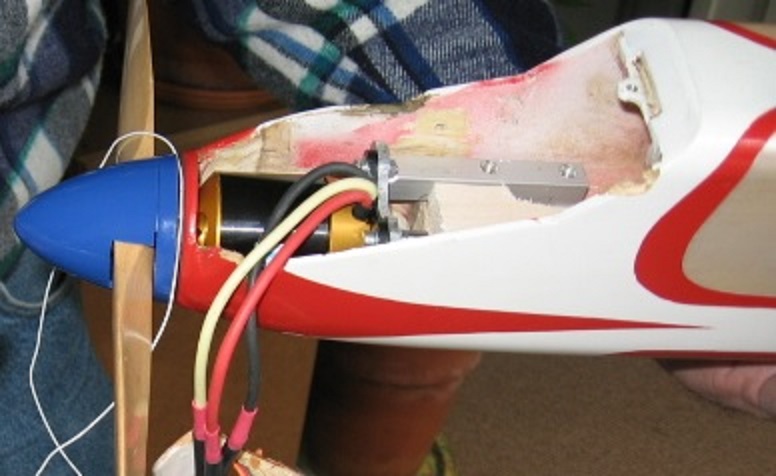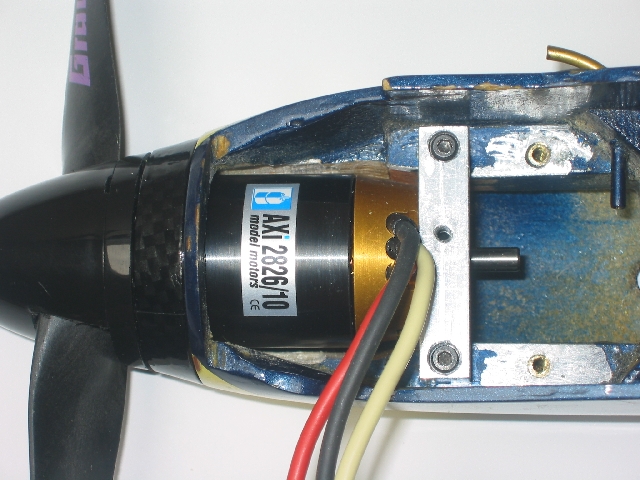Hi Steve,
Bruno here from the Netherlands.
As far back as 2006 when the Dutch team decided to bring one electric F2B in the air, our combined effort made me the first from our country to fly electric at a W Ch. Without the works of Bob Hunt and his guru, Dean Pappas we never would have made it that quick.
Starting the first flight tests early June, couple of weeks later we were in Valladolid.
For testing we took airframes from Henk de Jong, already flown with ST G51. The electrics I cobbled together were a rough copy of Bob's set up, only with parts (home made timer, controller, battery) as available in Europe.
Third member, Erik Janssen was our machinist and clever thinker. He made some nice contraptions to stick the AXI in the nose, where once there was a Super Tigre.
The first attempt was with Henk's 'Little Pearl', a Werwage Juno derivate with straight flap hinge line and enlarged tail.
Two aluminium bars were drilled to fit on the enginebearers and a 3 mm aluminium plate was screwed perpendicularly to these.
The (familiar) cross mount of the AXI was screwed to this. Needless to say, this could be done simpler...

This configuration made only one -incomplete- flight. Because of the battery, the CG moved forward, the plane was a bit sluggish in response, and was pancaked in the exit from the hourglass. As this was the first -later abandoned- fuselage, the wing and tail were rejoined to the second fuse and Henk used that combination (and ST 51) to reach 15th spot on that W Ch.
So our first test pointed out that we needed a larger plane to carry the excess weight.
That was the Blue Pearl.
Erik made a aluminium block that fitted between the original engine bearers, with 'ears' that sat on top of the front holes.
A big hole in the middle of the block clearing the motor shaft and four holes for the screws, from the back right into the motor, eliminating the need for that extra cross brace.
As seen from the top (just copy the idea, I'd suggest):

This worked well, but for anything but perfect weather (that I had in Spain) the set up proved a little underpowered.